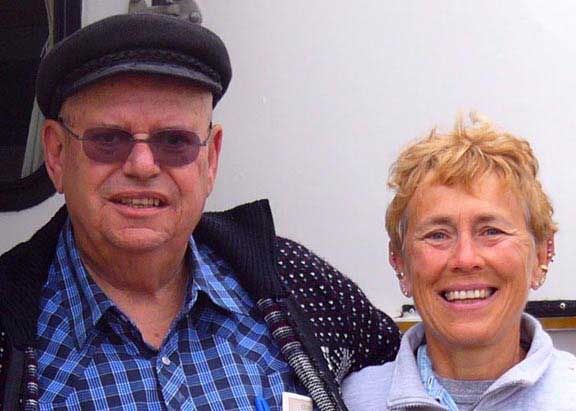
A dirt road off of US 95 about 18 miles south of Quartzsite leads to Palm Canyon. We followed it east for about 9 miles toward a large, block mountain. The road was passable, but a bit rough. At the parking lot a half-mile foot trail leads to the canyon. I didn’t think that I could handle the trail so I stayed with the truck while the others hiked to the canyon. The trail was well marked but rough most of the way due to large rocks and has some steep sections. It’s took about an hour’s walk to make the round trip.
According to a brochure found there, the palms are probably descendants of palms that grew in this region during the last periods of North American glaciation. Some botanists theorize that the trees gradually spread into these canyons and other protected niches as the climate warmed to desert conditions. Other researchers have suggested that the trees may have been spread from other palm groves by birds or coyotes carrying seeds in their digestive tracts.
Since palm trees do not produce annual growth rings like shade trees, it is very difficult to say how old the trees might be. In Palm Canyon, the palm trees are able to survive in the narrow side canyons where direct sunlight is limited but some moisture is available. The probability of these trees surviving very long is directly dependent on the microclimate in that protected canyon.
The most prominent trail leads to a small sign on a slightly elevated area near the middle of the canyon. By looking upward in the narrow, north trending side canyon, you will see the palms clearly. For a short time at midday, the trees are well-lighted for photos. The rest of the time the trees are shaded.

On the way to the palms the we also visited an area near Quartzsite where General George Patton trained desert troops during WWII. There are still signs spelled out with rocks visible from the air for pilots in training to view. It seems that they also trained female pilots there and the boys in desert training were anxious to ingratiate themselves with the lady pilots. This one had large letters spelling out "QUARTZSITE" with this arrow pointing the way.

We also stopped to view a 30-foot desert intaglio (or geoglyph) known as the Bouse Fisherman. Intaglios (in-tal-yos) are large human, animal and geometric figures on the desert floor also best viewed from the air. It's believed intaglios were made by ancestors of today's Native Americans living along the Colorado River. Perhaps the drawings are messages to their gods or ancestors, a common theme throughout human civilization. it's not known if these geoglyphs are two-hundred years old or ten thousand. Many have withstood the test of wind, rain and time, others having fallen recent victim to motorcycles, SUV's, quads and General George S. Patton's tank-training exercises.

No comments:
Post a Comment